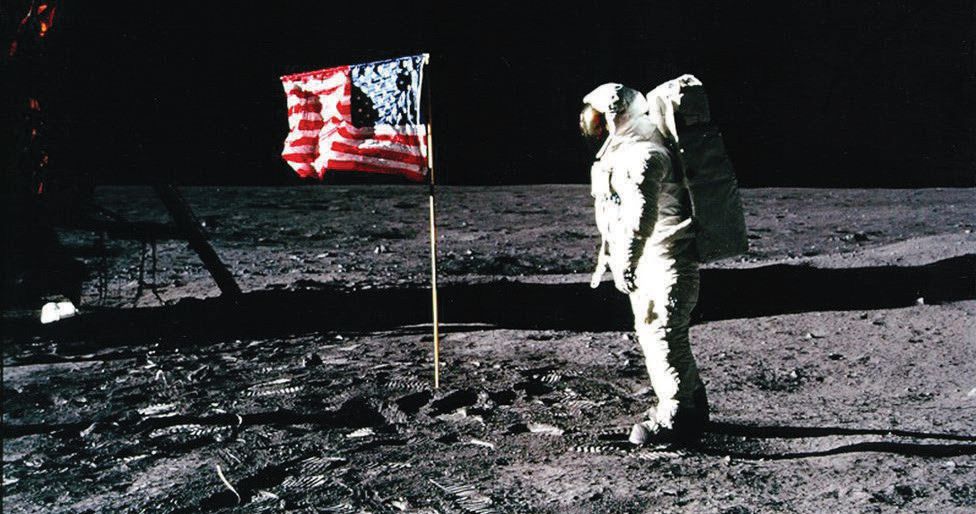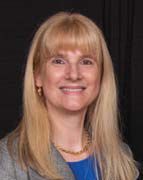One small step…
Dr. Maureen Hunter | TLT President's Report May 2015
The giant leap mankind made on July 20, 1969, still resonates with generations today.

NASA’s space race popularized science and inspired generations of young scientists.
DO YOU REMEMBER WHERE YOU WERE and what you were doing on July 20, 1969? Many of you weren’t even born yet. But me, I was becoming a scientist. On that very day in history, two astronauts emerged from the Apollo 11 Lunar Module to become the first men to step on the surface of the moon.
I was only one of an estimated 600 million people watching Neil Armstrong step onto the moon’s surface. While that day now seems a distant past and I was only a child, I fondly remember the transformative hold it took on me. Today, I look up to the moon, and I’m transported back in time—to a time when I and so many of my friends dreamed of becoming astronauts.
On that evening in 1969, I knew something big was happening. All day the house was buzzing with excitement and anticipation. My aunt, uncle and five cousins from New Jersey were visiting, and with my grandmother, parents, sister and brother, that made 13 of us in the house. All day long we kids pretended to be astronauts—wearing space suits made with layers of clothes and winter coats, we jumped up and down on the beds in an attempt to defy gravity. It was difficult to imagine the astronauts so far away. We kept running outside and looking to the sky.
Many details of that day are etched in my memory, but, like most people, what I remember most vividly is the lunar landing. That night we kids were allowed to stay up late. We all sat around our rather small TV set complete with rabbit ears. The images looked ghostly to me. My father kept jumping up to adjust the rabbit ear antennae trying to make the picture clearer. I could sense the anxiousness in the adults. They hesitated between teaching the significance of the historic moment and hushing us to hear Walter Cronkite walk us step by step through the exciting event.
Just before Neil Armstrong came down the ladder, you could hear a pin drop. I looked at my mother. She was praying. And as Neil Armstrong stepped from the bottom of that ladder to the surface of the moon and uttered his famous words, “One small step for (a) man, one giant leap for mankind,” we all cheered, and my aunt cried. It was the most powerful moment showing the human spirit I had ever seen.
Then my father said, “We did it. In less than a decade, we did it.” I had no idea at the time that he was referring to President Kennedy’s 1961 challenge to NASA to put a man on the moon and return him safely before the decade was over.
All of these memories of that day in my childhood home and the historic Apollo 11 mission came rushing back to me during a recent visit our family made to the Kennedy Space Center. As we sat in the actual mission control room, filled with antiquated computers and monitors, my husband turned to my daughter and said, “You have more power in your cell phone than all the computers in this room.” And then suddenly the show started with a video clip from that speech by President Kennedy my father was referring to. Kennedy said, “We choose to go to the moon in this decade and do the other things, not because they are easy, but because they are hard…”
It had been more than 10 years since our last visit to the Kennedy Space Center—and wow! Along with the technical infrastructure—including massive buildings, the crawler-transporter and multiple launch pads—the visitor center now has been raised to theme park splendor only possible in Florida. But the pièce de résistance is the space shuttle Atlantis exhibit. The Atlantis is displayed as only spacewalking astronauts have seen her before, rotated 43.21 degrees with payload doors open and the Canadian robotic arm extended.
When I walked around the Atlantis to look at the underside of the craft, a view many might think anticlimactic, I noticed all the scorch marks left on the tiles from re-entering the earth’s atmosphere, and I was a truly moved. Standing before me was history: 33 missions, more than 306 days in space, 125,935,769 miles traveled, 4,848 orbits and 14 satellites deployed.
The words spoken by Kennedy, “not because they are easy, but because they are hard,” echoed in my mind for weeks. President Kennedy may not have been a visionary enraptured with exploring the unknown frontiers in space, but he understood how NASA’s space program would stimulate the economy, protect society and inspire students to pursue innovative and ambitious scientific educations and careers.
As an adult and the mother of three children, I understand the importance of holding onto what many might see as childlike enthusiasm, dreaming the improbable, and the motivating force of laying down challenges and promoting competition. As scientific leaders in our industry, it is our responsibility to keep the fire burning. That’s what STLE’s STEM (Science, Technology, Engineering and Math) Camp program is all about, inspiring high school students to dream the improbable, to make it the possible and become great scientists and engineers. Not because it is easy, but because it is hard.
NASA’s space race popularized science, opened so many doors to understanding the cosmos and life on earth and inspired generations of young scientists. Many people today doubt the social and economic benefits of space travel. For me, NASA is not a luxury project that can be done on disposable income. The unintended consequences in ceasing to explore are unthinkable.
 Maureen Hunter is the technical service manager for King Industries, Inc., in Norwalk, Conn. You can reach her at mhunter@kingindustries.com
Maureen Hunter is the technical service manager for King Industries, Inc., in Norwalk, Conn. You can reach her at mhunter@kingindustries.com.